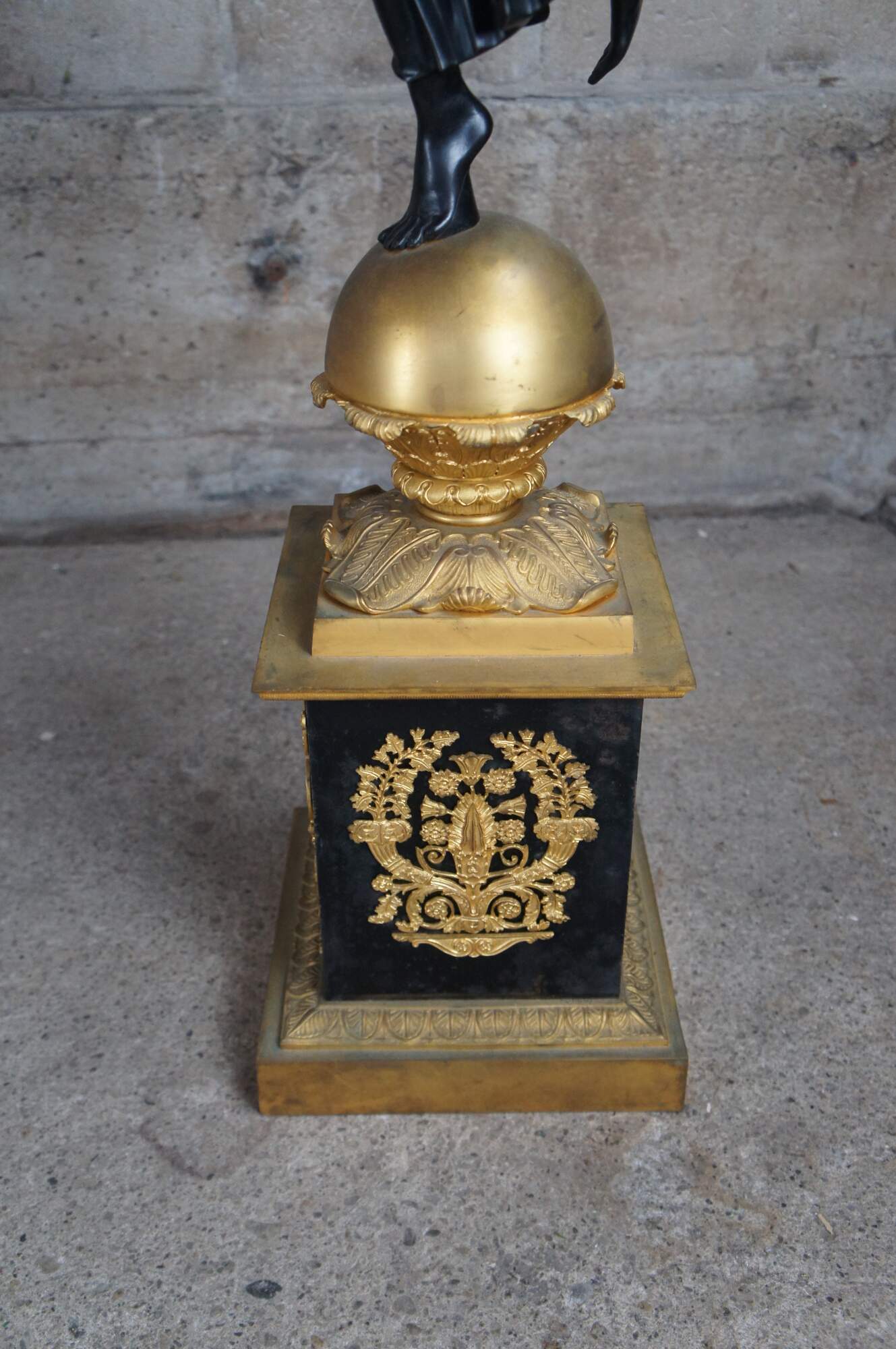
2 Antique French Empire Figural Gilt Bronze Candelabras Sculpture Statues 54"
Sold
Shipping:
Free Shipping Included
Delivery:
Estimated 2-15 Business Days
Payments:
Credit Card, Check, Cash, PayPal, Apple Pay, Venmo
Returns:
30 Days 100% Money Back Guarantee, Buyer Pays Return Shipping
Description
Monumental pair of large figural French gilt bronze candelabras possibly executed by Pierre Philippe Thomire, circa 19th century. Each candelabra is supported by a Nike-form standing on one leg over an orb stepped plinth base with ornate applied foliate featuring a planter and harp. The winged figure of Nike was a symbol of military triumph and was a common feature of Empire-style decorative arts during the Napoleonic period. The candelabras are mounted to a halo held over nikes head. A breath taking pair that will immediately become a conversation piece and add granduer to any space.
The candelabra form was designed by Charles Percier (French, 1764-1838) during the early nineteenth century for Empress Josephine. Later executed by
Pierre Philippe Thomire (French, 1751–1843). A similar example is conserved by the Metropolitan Museum of Art, which also holds Perciers original drawing of the candelabra.
Charlies Percier
Upon winning the Prix de Rome for architecture in 1786, Charles Percier spent the next seven years as a pensionnaire at the Académie de France. Together with Pierre-François-Léonard Fontaine (1762-1853), a fellow student of the architect Atoine-François Peyre, he sketched the monuments of ancient and modern Rome. Upon their return to Paris, Percier and Fontaine embarked on a long and successful collaboration, working closely together as architects and designers until about 1814. Together they published a number of books on architecture, ornament and furnishings, each accompanied by their illustrations. These were often collaborative efforts in which Percier drew the architectural and sculptural elements and Fontaine the landscapes and figures. These include the Palais, maisons, et autres edifices modernes, dessines a Rome, published in 1798 and followed three years later by their most influential work, the Recueil de decorations interieures. Percier’s first important official commission came in 1800, when he was asked by Josephine Bonaparte to take charge of the renovation and interior decoration of her villa at Malmaison. In later years both Percier and Fontaine worked extensively for Napoleon; at the Tuileries, Saint-Cloud, Compiègne, Fontainebleau and elsewhere, as well as designing such court festivities as the coronation of Napoleon as Emperor and his marriage to Marie-Louise of Austria. Indeed, such was their importance as architects and designers during the Napoleonic era that Percier and Fontaine can arguably be said to have created the Empire style.
Pierre Philippe Thomire
Although trained as a sculptor, Pierre-Philippe Thomire decided to follow his father into the potentially more lucrative profession of bronze caster, becoming the most important one of the late 1700s. Before setting up his own establishment in 1775, Thomire trained in the workshop of Pierre Gouthière.
Thomire's big break came when he began assisting Jean-Claude-Thomas Duplessis, the artistic director of the Sèvres Porcelain Manufactory, in making mounts. When Duplessis died in 1783, Thomire took over his job, supplying all the gilt bronze mounts for the porcelain. This work kept him in business throughout the French Revolution, when many other producers went bankrupt. In 1804 he bought the business of a marchand-mercier, thus allowing him to sell furniture, Sèvres porcelain, and decorative objects, which he produced in his own workshops. In 1809 the Emperor Napoleon made him ciseleur de l'empereur (Engraver to the Emperor); because of the large number of pieces Thomire supplied to the palaces, his firm became fournisseur de leurs majestés (Furniture Suppliers to their Majesties) two years later.
Thomire's business managed to survive even after Napoleon's downfall, winning numerous medals at various exhibitions. He finally retired at the age of seventy-two but continued to work as a sculptor, exhibiting at the Salon until he was in his eighties.
Condition
Good Condition; some missing candelabra arms / scrolling motif on one of the sculptures as well as missing applied bronze to one side of one of the plinth bases. Candle holders slightly uneven
Dimensions
53.5" x 20" x 20", base 9.5"













